If you want to know about the staircase design or landscape garden or requirements for disabled persons in a building, please click the link.
Introduction
Microclimate in building refers to the localized climate conditions within a building, which are influenced by various factors such as temperature, humidity, air quality, lighting, and noise. The microclimate can differ from the macroclimate outside the building, and its optimization is essential to provide a comfortable and healthy indoor environment for occupants.
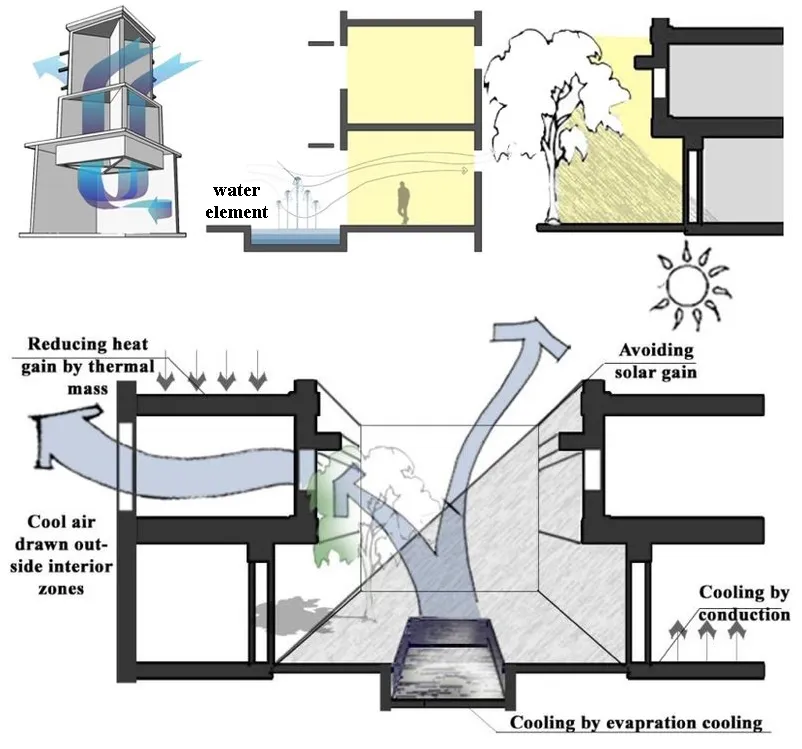
Importance of microclimate in building design
The microclimate plays a critical role in building design as it directly impacts the indoor air quality, occupant comfort, and energy efficiency of a building. By optimizing the microclimate, building designers can create a sustainable and healthy indoor environment that enhances the wellbeing and productivity of occupants while reducing energy consumption and costs.
1) Factors that Affect Microclimate in Building
Microclimate in buildings can be affected by various factors, both indoor and outdoor. Some of the primary factors that affect microclimate in buildings are:
i) Indoor and outdoor temperature and humidity
Temperature and humidity are crucial factors that affect the comfort of occupants and energy consumption of a building. By controlling the indoor temperature and humidity through heating, ventilation, and air conditioning (HVAC) systems, designers can create a comfortable indoor environment and reduce energy costs.
ii) Air quality
Air quality is a critical factor in creating a healthy indoor environment. Poor indoor air quality can lead to health problems such as allergies, asthma, and respiratory infections. To optimize the microclimate in building, designers need to consider the source of indoor air pollution, ventilation rates, and filtration systems.
iii) Lighting
Lighting is essential for creating a comfortable and productive indoor environment. The type and intensity of lighting can affect the mood, health, and productivity of occupants. To optimize the microclimate, designers need to consider the natural lighting, artificial lighting, and lighting controls.
iv) Noise
Noise is a significant source of stress and distraction for occupants. To optimize the microclimate, designers need to consider the sources of noise, sound insulation, and sound masking systems.
v) Building orientation and design
Building orientation and design can significantly impact the microclimate in building. The orientation of the building can affect the amount of natural light, solar heat gain, and wind patterns. The design of the building envelope, such as windows, insulation, and roofing, can also impact the energy efficiency and comfort of the building. By optimizing the building orientation and design, designers can create a more sustainable and comfortable indoor environment.
By addressing these sub-topics, designers can optimize the microclimate in building, improve the indoor environment, and reduce the energy consumption and costs of the building.
2) Designing for Microclimate in Building
Designing for microclimate involves using various strategies to create a comfortable, healthy, and sustainable indoor environment that is in harmony with the natural environment. Some of the sustainable design strategies used to optimize microclimate in buildings include:
i) Building envelope design
The building envelope refers to the physical separator between the interior and exterior of a building. The design of the building envelope can significantly impact the energy efficiency, comfort, and indoor air quality of a building. Designers can optimize the building envelope by incorporating insulation, air sealing, high-performance windows, and shading devices to reduce heat gain and loss.
ii) HVAC system design
HVAC systems play a critical role in maintaining a comfortable indoor environment by regulating the temperature and humidity of the building. Designers can optimize the HVAC system by selecting energy-efficient equipment, properly sizing the system, and incorporating controls to maintain indoor air quality and reduce energy consumption.
iii) Natural ventilation design
Natural ventilation is the process of using natural airflow to cool and ventilate a building. By optimizing the natural ventilation design, designers can reduce energy consumption, improve indoor air quality, and create a comfortable indoor environment. Designers can incorporate features such as operable windows, wind catchers, and ventilation towers to promote natural ventilation.
iv) Passive solar design
Passive solar design is the process of using the sun’s energy to heat and cool a building naturally. By optimizing the passive solar design, designers can reduce energy consumption, improve indoor air quality, and create a comfortable indoor environment. Designers can incorporate features such as building orientation, shading devices, and thermal mass to maximize passive solar benefits.
v) Daylighting design
Daylighting is the process of using natural light to illuminate a building’s interior. By optimizing the daylighting design, designers can reduce energy consumption, improve indoor air quality, and create a comfortable and productive indoor environment. Designers can incorporate features such as skylights, light shelves, and interior glazing to maximize daylighting benefits.
By incorporating these design strategies into the building design, designers can optimize the microclimate in building, create a sustainable and healthy indoor environment, and reduce the energy consumption and costs of the building.
3) Benefits of Optimizing Microclimate in Building
Optimizing microclimate in buildings can have numerous benefits, including:
i) Improved indoor air quality and comfort
Designing for microclimate in building can improve the indoor air quality and comfort for occupants. By optimizing ventilation, controlling temperature and humidity, and reducing indoor air pollution, designers can create a healthier and more comfortable indoor environment.
ii) Reduced energy consumption and costs
Designing for microclimate in building can also reduce the energy consumption and costs of the building. By optimizing insulation, selecting energy-efficient equipment, and incorporating passive design strategies, designers can reduce the building’s energy demand and lower operating costs.
iii) Increased productivity and wellbeing of occupants
Creating a comfortable and healthy indoor environment can also increase the productivity and wellbeing of occupants. By optimizing lighting, acoustics, and thermal comfort, designers can create a space that promotes concentration, reduces stress, and enhances creativity.
iv) Decreased environmental impact
Designing for microclimate in building can also decrease the environmental impact of the building. By reducing energy consumption, minimizing waste, and promoting sustainability, designers can create a building that has a lower carbon footprint and supports the health of the planet.
v) Enhanced building performance and value
Finally, designing for microclimate in building can enhance the building’s performance and value. By incorporating sustainable design strategies and creating a comfortable and healthy indoor environment, designers can increase the building’s attractiveness to potential tenants, increase resale value, and support long-term operational and maintenance goals.
- By designing for microclimate in building, designers can achieve a range of benefits, from improving indoor air quality and comfort to reducing energy consumption and environmental impact. These benefits can ultimately enhance the performance, value, and overall success of the building.
4) Case Studies of Microclimate Optimization in Building
Some information about case studies of microclimate optimization in buildings:
i) The Edge Building in Amsterdam, Netherlands
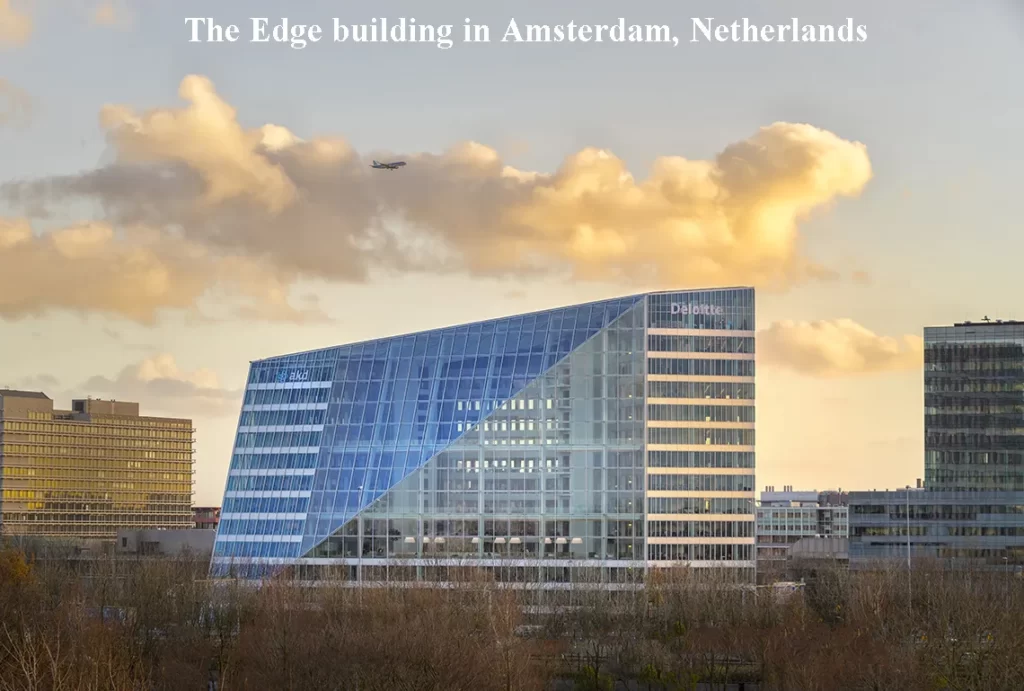
The Edge Building is a sustainable office building located in Amsterdam, Netherlands. It was designed by PLP Architecture and completed in 2014. The building uses a range of sustainable design strategies to optimize the microclimate, including a high-performance building envelope, a smart HVAC system, natural ventilation, and daylighting. The building has achieved a BREEAM Outstanding rating and has been recognized as one of the most sustainable buildings in the world.
ii) One Angel Square Building in Manchester, UK
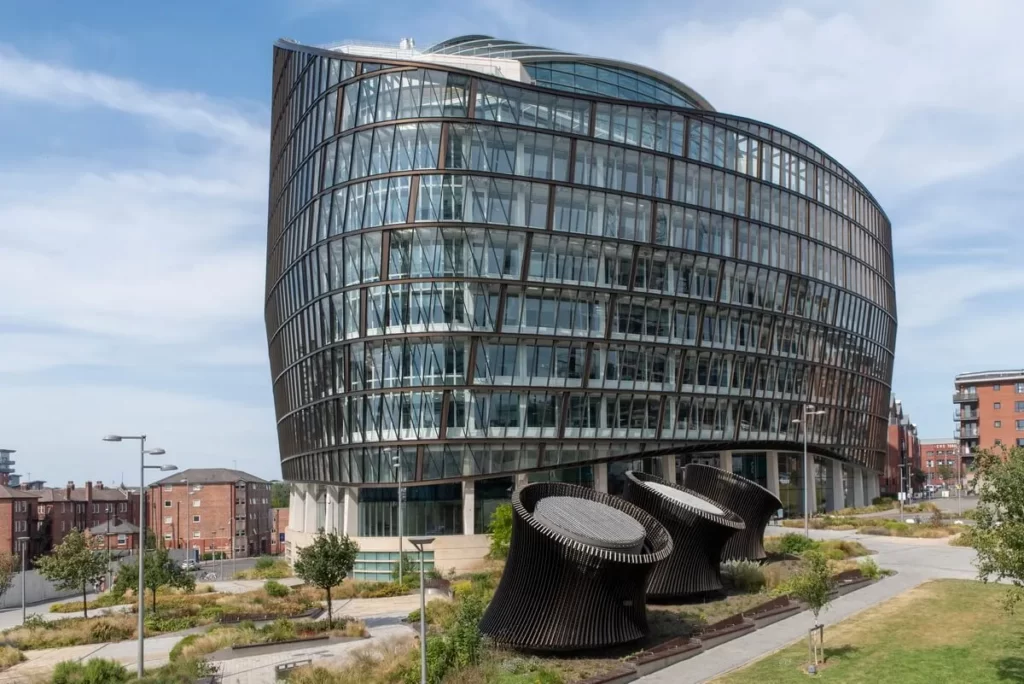
One Angel Square is a sustainable office building located in Manchester, UK. It was designed by 3DReid and completed in 2013. The building uses a range of sustainable design strategies to optimize the microclimate, including a high-performance building envelope, a ground-source heat pump system, natural ventilation, and daylighting. The building has achieved a BREEAM Outstanding rating and has been recognized as one of the most sustainable buildings in the UK.
iii) National Renewable Energy Laboratory Research Support Facility in Colorado, US

The National Renewable Energy Laboratory (NREL) Research Support Facility is a sustainable office building located in Colorado, US. It was designed by RNL Design and completed in 2010. The building uses a range of sustainable design strategies to optimize the microclimate, including a high-performance building envelope, a chilled beam HVAC system, natural ventilation, and daylighting. The building has achieved a LEED Platinum rating and has been recognized as one of the most sustainable buildings in the US.
iv) Bullitt Center in Seattle, US
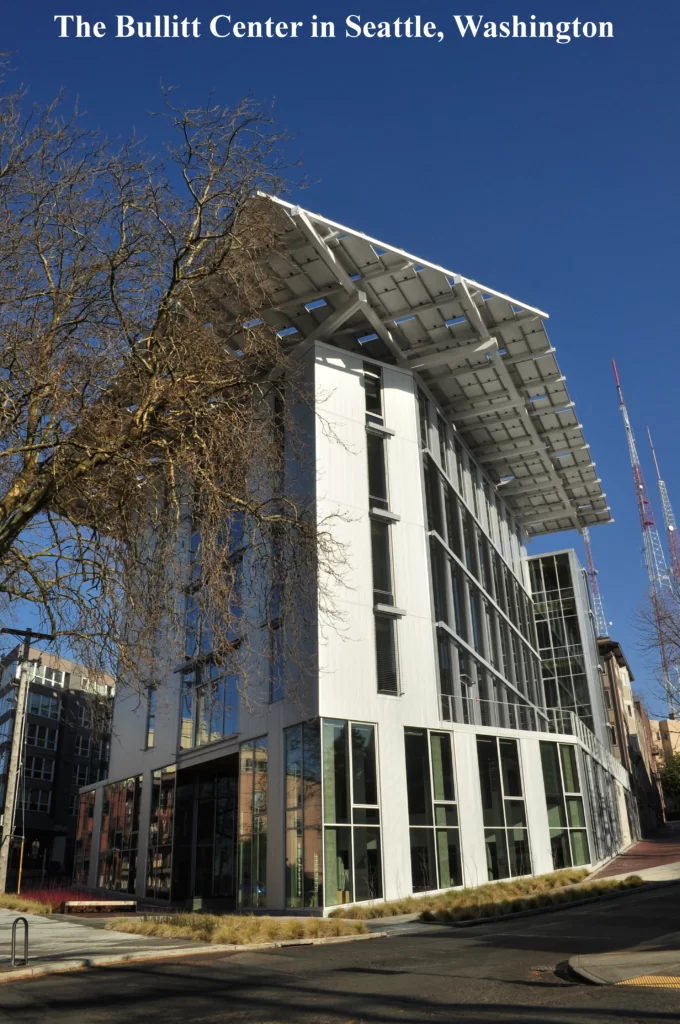
The Bullitt Center is a sustainable office building located in Seattle, US. It was designed by Miller Hull Partnership and completed in 2013. The building uses a range of sustainable design strategies to optimize the microclimate, including a high-performance building envelope, a radiant heating and cooling system, natural ventilation, and daylighting. The building has achieved a Living Building Challenge certification and has been recognized as one of the greenest commercial buildings in the world.
v) Bahrain World Trade Center in Manama, Bahrain

The Bahrain World Trade Center is a sustainable office building located in Manama, Bahrain. It was designed by Atkins and completed in 2008. The building uses a range of sustainable design strategies to optimize the microclimate, including a wind turbine system that harnesses the natural wind patterns of the area to generate renewable energy. The building has achieved a LEED Platinum rating and has been recognized as one of the most sustainable buildings in the Middle East.
vi) Pixel Building in Melbourne, Australia
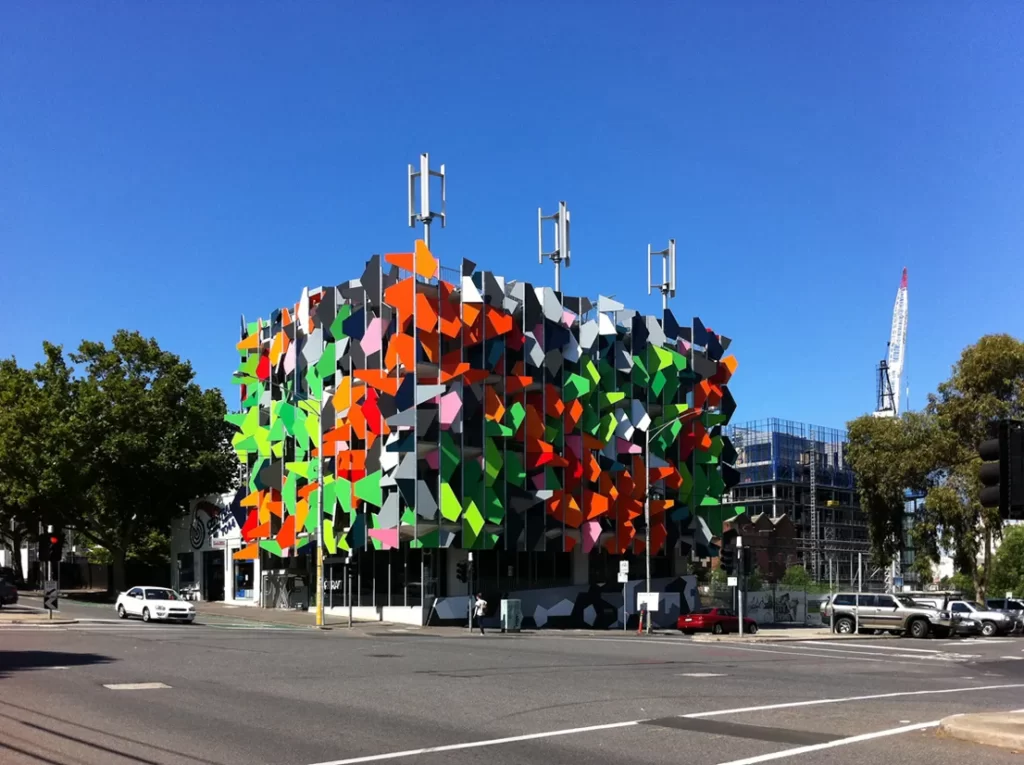
The Pixel Building is a sustainable office building located in Melbourne, Australia. It was designed by Studio505 and completed in 2010. The building uses a range of sustainable design strategies to optimize the microclimate, including a high-performance building envelope, a geothermal heating and cooling system, natural ventilation, and daylighting. The building has achieved a 6 Star Green Star rating and has been recognized as one of the greenest buildings in Australia.
- These examples demonstrate the importance of designing for microclimate in building and show how sustainable design strategies can be used to achieve a range of benefits, from improved indoor air quality and comfort to reduced energy consumption and environmental impact.
5) Conclusion
Microclimate refers to the localized climate conditions within a building or its immediate surroundings. Designing for microclimate is crucial in creating comfortable, healthy, and sustainable buildings. Factors such as indoor and outdoor temperature and humidity, air quality, lighting, noise, building orientation, and design can all impact the microclimate of a building.
Call to action
As architects, designers, and building owners, it is essential to prioritize microclimate optimization in building design. By incorporating sustainable design strategies that optimize the microclimate, we can create buildings that are comfortable, healthy, and sustainable, while also reducing energy consumption and environmental impact. By prioritizing microclimate optimization, we can create a better future for both people and the planet.